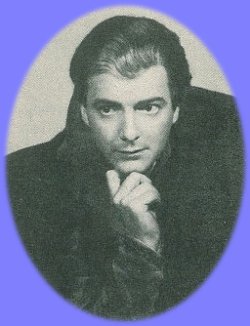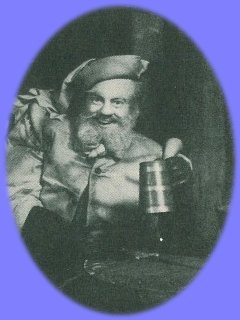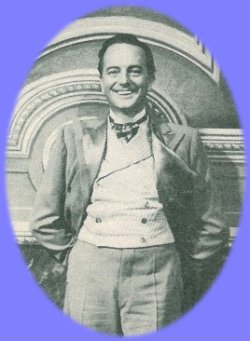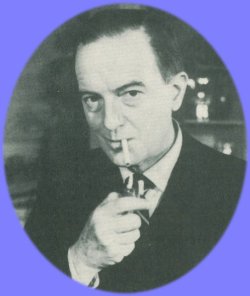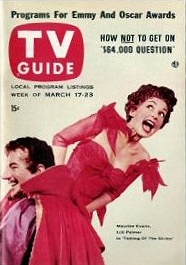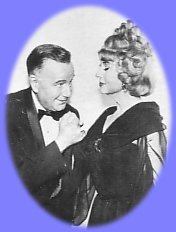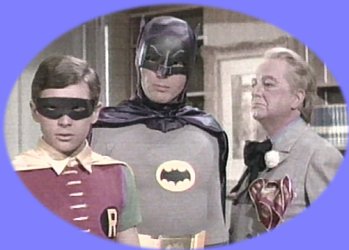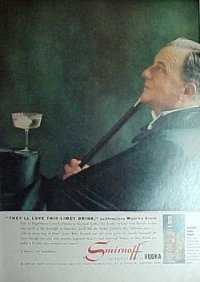
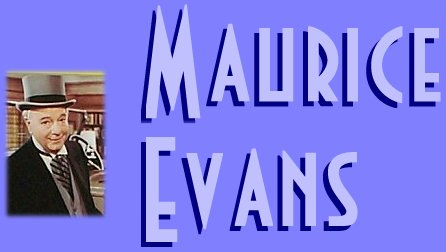
By CosmosCotillion Maurice Herbert Evans was born on June 3rd, 1901 in Dorchester, Dorset, England. Unlike his character on Bewitched, his name was pronounced "Morris" not "More-eese" even though the spelling was the same. Evans was raised in London, where his father was a justice of the peace who dabbled as a playwright on the side. Some of Maurice's earliest amateur stage appearances were in his father's adaptations of Thomas Hardy novels, which fostered his love of acting at an early age. Maurice also sang with London's St. Andrew's choir as a boy tenor during his youth. He made his professional stage debut in London in 1926 in a repertory production of "Sweeney Todd," also called "The Demon Barber of Fleet Street." Of his calamitous performance in this play, Mr. Evans once amusingly commented: "On the opening night when I was shot down a trap door to be converted into hamburger in the barber's basement, I cracked my head against the plaster cyclorama. Upon regaining consciousness, I resolved never again to play the victim in a melodrama." When he wasn't able to find acting jobs, Maurice worked at a clothes cleaning and dyeing store in order to keep a roof over his head. His first stage success was in the 1929 London production of the play "Journey's End," co-starring his friend Laurence Olivier and directed by James Whale. After well-received performances in a number of other plays, Evans culminated his success on the London stage with a season at the Old Vic during 1934-1935, where he first starred in William Shakespeare's "King Richard II." Evans also appeared in a few British films during the early part of his career, most notably in White Cargo in 1930 and in the Seymour Hicks version of Scrooge in 1935. Evans made his American stage debut at The Martin Beck Theatre in New York on December 23rd, 1935 where he appeared opposite Katharine Cornell in Shakespeare's "Romeo and Juliet." He also starred on Broadway opposite Miss Cornell in a 1936 production of George Bernard Shaw's "St. Joan". In 1936, Maurice played the role of Napoleon in "St. Helena." In 1937, Evans invested some of his own savings into a production of "King Richard II" in which he also starred. Running from February to June of 1937 at the St. James's Theatre in New York, the play was a huge critical and box office success and Maurice's performance garnered rave reviews. He was proclaimed "the finest actor of our times," and Mr. Evans is still considered by many to be one of the greatest interpreters of Shakespeare's works ever to grace the stage. Due to the play's tremendous success and Maurice's unprecedented popularity in the role, "King Richard II" was re-staged during October and November of 1937, and again in April of 1940.
Evans as Romeo in 1935 Following the success of "King Richard II," Evans
appeared on Broadway in acclaimed productions of Shakespeare's "King
Henry IV, Part I,""Twelfth Night,""Macbeth,"
and three revivals of "Hamlet," in which he produced and starred.
Evans became an American citizen in 1941, whereupon he immediately enlisted
and was placed in charge of the Army Entertainment Section, Central
Pacific Theatre, during World War II. Evans staged numerous comedies
and dramas (including a shortened version of "Hamlet") to
entertain American, British, and Canadian troops stationed overseas,
and by the end of the war he had advanced to the rank of Major. Of his
experiences during the war, Mr. Evans remarked: "If I have a creed
in the theatre, it is that I will appear only in things that are 'good
of their kind'. This was a lesson I learned when I was in charge of
Army entertainment during the last war. The G.I.'s showed me that they
had equal appreciation for Yehudi Menhuin or an anonymous blonde accordion
player, provided both blondes shared the same proficiency at their respective
instruments. It was the same with 'Hamlet' and another little number
we produced called 'Shape Ahoy'---both were 'good of their kind' and
both got a
Evans as King Henry IV in 1939 Upon his return to America in 1945, Maurice immediately starred in a third revival of "Hamlet." This version was produced by Michael Todd and ranked as the longest running production of "Hamlet" on Broadway until Richard Burton's revival of the play in 1964. Evans also produced, directed, and starred in a very successful production of Shaw's "Man and Superman," which ran from October 8th, 1947 to June 19th, 1948.
Evans in Man and Superman in 1948 In 1950, Mr. Evans was awarded a special Tony Award for "guiding the City Center Theatre Company through a highly successful season". From October 29th, 1952 to February 27th, 1954 Maurice starred in a very popular production of "Dial M For Murder," which ran on Broadway for 552 performances following a highly successful tour in regional theatres. He played the villain in this play, and said at the time: "After the respectful plaudits to which I have become accustomed, I find it refreshing for a change to hear a member of the audience greeting my last entrance in the play with the comment 'You sonofa _ _ _ _ _!'"
Evans Takes to Broadway in Dial M for Murder In 1954, Mr. Evans won a second Tony Award for "Best Play" as co-producer (with George Schaefer) of "Teahouse of the August Moon." He was also nominated for two additional Tony Awards, as "Best Actor" in 1957 for the play "Applecart" and again in 1961 as"Best Actor in a Musical" for his work in the play "Tenderloin." Between 1953 and 1960, Maurice appeared in a record eleven episodes of The Hallmark Hall of Fame, during which he brought Shakespeare to the masses through the new medium of television. In 1961, Mr. Evans won an Emmy Award for "Outstanding Single Performance by a Leading Actor" for his performance in The Hallmark Hall of Fame production of "Macbeth." This version was filmed and broadcast in Technicolor, giving it the distinction of being one of the first television productions to make use of this then innovative process. Mr. Evans' most notable film credit during this period was in 1953's The Story of Gilbert and Sullivan, in which he portrayed British composer Arthur Sullivan.
Evans Graces the Cover of TV GUIDE with Lilli Palmer in 1956 Following Maurice's last appearance on the Broadway stage in 1962's "The Aspern Papers," he focused primarily on TV and film roles for the remainder of his career. He won the part of Samantha's father "Maurice" on the long-running sitcom Bewitched after Vincent Price and Cesar Romero had been considered for the role and Elizabeth Montgomery's father, Robert Montgomery, declined the part.
Evans as Maurice on Bewitched In addition to his work on Bewitched, Evans also appeared in guest-starring roles on the popular television shows The Man from U.N.C.L.E., Batman (in which he played The Puzzler), The Big Valley, The Mod Squad, The Streets of San Francisco, The Six Million Dollar Man, Columbo, Fantasy Island, and The Love Boat, among others. His film work during this period included roles in Roman Polanski's Rosemary’s Baby {1968}, and as Dr. Zaius in Planet of the Apes (1968) and Beneath the Planet of the Apes (1970). He also gave a highly amusing performance opposite Steve Martin and Bernadette Peters in the hit motion picture The Jerk in 1979.
Evans as The Puzzler in Batman Mr. Evans moved back to Surrey, England during the 1980's where he lived in semi-retirement due to his advanced age and declining health. He enjoyed cooking and doing plumbing, masonry, and carpentry work on his home during his remaining years, and he continued to accept acting jobs when he felt up to the task. In 1980, Maurice toured with the play "Holiday" and appeared in the TV movie The Girl, the Gold Watch, and Everything with Pam Dawber and Robert Hays. In 1983, he co-starred opposite Helen Hayes in a made for TV Agatha Christie movie called The Caribbean Mystery. During this period, Evans also wrote his autobiography All this...and Evans Too!, which was published in 1987. His final acting performance was in The War of the Worlds television series in the episode entitled "Path of Lies," which aired one year after his death. Maurice Evans died in a nursing home in Rottingdean, East Sussex, England on March 12th, 1989 of heart failure brought on by a bronchial infection. He was 87 years old. Like his Bewitched co-stars Paul Lynde and Dick Sargent, Mr. Evans preferred the company of gentlemen and he never married or had children.
Maurice Evans
|
